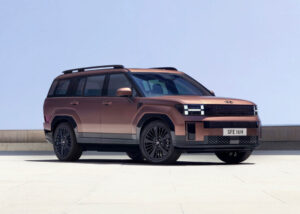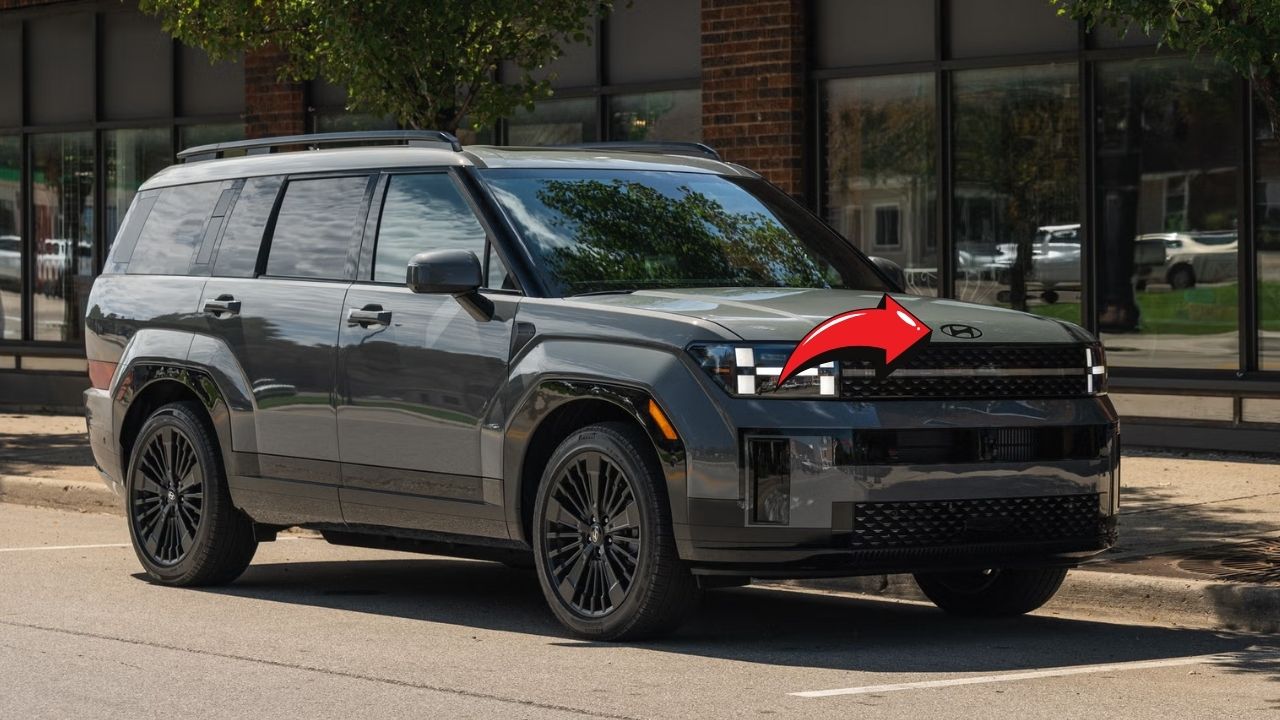The 2025 Hyundai Santa Fe Hybrid just became more expensive for Australian buyers. Hyundai quietly raised prices by $1500 across all hybrid variants last month.
This move surprised many car shoppers who were considering the popular family SUV. The price increase took effect on May 1, 2025, without any warning to customers.
What Changed and What Didn’t
Only the hybrid versions of the Santa Fe got more expensive. The regular petrol models kept their original prices, which seems odd to many industry watchers.
Hyundai didn’t add any new features or improvements to justify the higher cost. The company simply decided to charge more for the same vehicle specifications.
New Pricing Structure Explained
The entry-level Santa Fe Hybrid FWD now costs $57,000 before on-road expenses. This makes it exactly $4000 more expensive than the equivalent petrol version.
Previously, hybrid buyers only paid an extra $2500 for the eco-friendly powertrain. The gap has now widened significantly, making the decision harder for budget-conscious families.
The top-spec Calligraphy Hybrid reaches $76,500 before dealer fees and registration. That’s a substantial amount for a mid-sized family SUV, even with premium features included.

Many dealerships report that customers are shocked when they learn about the new prices. Some potential buyers have switched to considering the petrol variants instead.
Why Hyundai Made This Decision
Hyundai Australia says they needed to align the Santa Fe with other models in their lineup. The company wants consistent pricing across all their hybrid offerings.
This strategy creates a standard $4000 premium for hybrid technology across multiple vehicle categories. The Tucson and Kona SUVs already follow this pricing pattern.
Market Positioning Strategy
The Korean manufacturer believes this pricing structure makes more sense long-term. They want customers to clearly understand the cost difference between conventional and hybrid powertrains.
Some industry experts think Hyundai is testing how much Australian buyers will pay for fuel efficiency. The SUV market remains strong despite rising costs of living.
The timing coincides with increased competition from Chinese brands offering cheaper hybrid alternatives. BYD and other manufacturers are putting pressure on established players.
However, Hyundai still enjoys strong brand loyalty among Australian families. Many customers prefer the reliability and service network of established brands.
Technical Specifications Remain Unchanged
The Santa Fe Hybrid still uses the same turbocharged 1.6-litre four-cylinder engine with electric assistance. Total system output reaches 172kW of power and 367Nm of torque.
Fuel economy stays at an impressive 5.6 litres per 100 kilometres in combined driving conditions. This efficiency advantage becomes more valuable as petrol prices continue rising.
Powertrain Comparison
Regular Santa Fe models use a larger 2.5-litre naturally aspirated engine without electric assistance. These variants produce more power at 206kW and 422Nm of torque.
However, they consume significantly more fuel at 9.3 litres per 100 kilometres in mixed driving. The difference becomes costly for families who drive frequently.
Both engine options run on regular 91-octane unleaded petrol, which helps keep running costs reasonable. Premium fuel isn’t required for either variant.
Towing capacity differs between the powertrains, with petrol models capable of pulling 2000kg compared to 1650kg for hybrids. This limitation might matter for boat or caravan owners.
Sales Performance and Market Impact
Hyundai has sold 2141 Santa Fe vehicles in Australia through April 2025. This represents a massive 78.3 percent increase compared to the same period last year.
The strong sales growth occurred despite the recent price increase affecting hybrid models. Many buyers seem willing to pay extra for the latest generation’s improved features.
Competition Analysis
The Kia Sorento, which shares mechanical components with the Santa Fe, outsold its Hyundai cousin with 3284 deliveries. However, Sorento sales actually dropped 8.9 percent year-on-year.
This suggests that Santa Fe buyers aren’t simply switching to the Kia alternative. The distinctive styling and brand preference play important roles in purchase decisions.
Palisade sales have suffered with only 678 units delivered, down 35.8 percent from last year. Some customers appear to be choosing the smaller Santa Fe instead.
The larger SUV segment faces challenges as families reassess their actual space requirements. Rising fuel costs make efficiency more important than maximum size.
Dealer Reactions and Customer Feedback
Local Hyundai dealerships report mixed reactions from customers about the price increase. Some buyers feel disappointed by the sudden change without added value.
However, many families still proceed with purchases because they specifically want hybrid technology. The fuel savings over several years can offset the higher initial cost.
Sales Team Strategies
Salespeople now emphasize the long-term fuel savings more heavily during customer presentations. They calculate potential savings over typical ownership periods.
Many dealers offer extended warranties or service packages to add perceived value. These extras help justify the higher purchase price for concerned customers.
Finance managers report that buyers often choose longer loan terms to manage the increased monthly payments. This strategy keeps the Santa Fe accessible to more families.
Some customers negotiate harder on trade-in values or optional accessories to reduce the overall transaction cost. Dealers show flexibility where possible.
Future Market Predictions
Industry analysts expect hybrid vehicle prices to stabilize as production volumes increase globally. Initial premium pricing often decreases as technology becomes mainstream.
The 2025 model year represents a transition period where manufacturers adjust pricing strategies. Consumer acceptance will determine whether these increases stick long-term.
Technology Adoption Trends
Australian buyers show increasing interest in electrified vehicles despite higher costs. Government incentives and rising fuel prices drive this trend.
The Santa Fe Hybrid offers a compromise between full electric vehicles and traditional petrol engines. This middle ground appeals to families with range anxiety concerns.
Charging infrastructure limitations make hybrids attractive for regional buyers who can’t rely on electric vehicle networks. The flexibility of petrol backup provides peace of mind.
Environmental consciousness among younger buyers influences family vehicle decisions. Parents want to demonstrate responsible choices to their children.
Ownership Costs Beyond Purchase Price
Fuel savings represent the biggest long-term advantage of choosing the hybrid Santa Fe. Current petrol prices make efficiency increasingly valuable.
A family driving 20,000 kilometres annually could save over $1000 per year in fuel costs with the hybrid system. This calculation assumes average driving conditions.
Maintenance Considerations
Hybrid vehicles generally require similar maintenance to conventional cars for most components. The electric system operates largely independently of regular service items.
However, battery replacement costs concern some buyers, though modern hybrid batteries typically last the vehicle’s lifetime. Hyundai provides substantial warranty coverage for peace of mind.
Insurance costs might differ slightly between hybrid and petrol variants. Some insurers offer discounts for environmentally friendly vehicles.
Resale values for hybrid vehicles often remain stronger as used car buyers increasingly prioritize fuel efficiency. This factor helps offset the higher initial purchase price.
Regional Market Considerations
Rural buyers might find the Santa Fe Hybrid particularly appealing for longer commutes to work or services. Fuel efficiency becomes more critical with greater distances.
However, some country areas have limited Hyundai service networks compared to major cities. Buyers should consider local support availability.
Urban vs Rural Usage
City driving favors hybrid systems which operate more efficiently in stop-start traffic conditions. The electric motor assists during acceleration from traffic lights.
Highway driving reduces the hybrid advantage somewhat, though fuel consumption remains better than equivalent petrol engines. Mixed driving conditions provide the best efficiency gains.
Parking considerations in urban areas don’t differ between hybrid and petrol Santa Fe models. Both variants have identical exterior dimensions and turning circles.
Some council areas offer preferential parking rates or access for hybrid vehicles. These local incentives can add value beyond fuel savings.
Frequently Asked Questions
Why did Hyundai increase hybrid prices but not petrol ones? The company wanted to create consistent pricing gaps across their hybrid lineup to match other models like Tucson and Kona.
How much more does the Santa Fe Hybrid cost now compared to petrol? There’s now a $4000 difference between equivalent hybrid and petrol variants, up from the previous $2500 gap.
When did the price increase take effect? The new pricing became effective on May 1, 2025, affecting all Santa Fe Hybrid variants by $1500 each.
